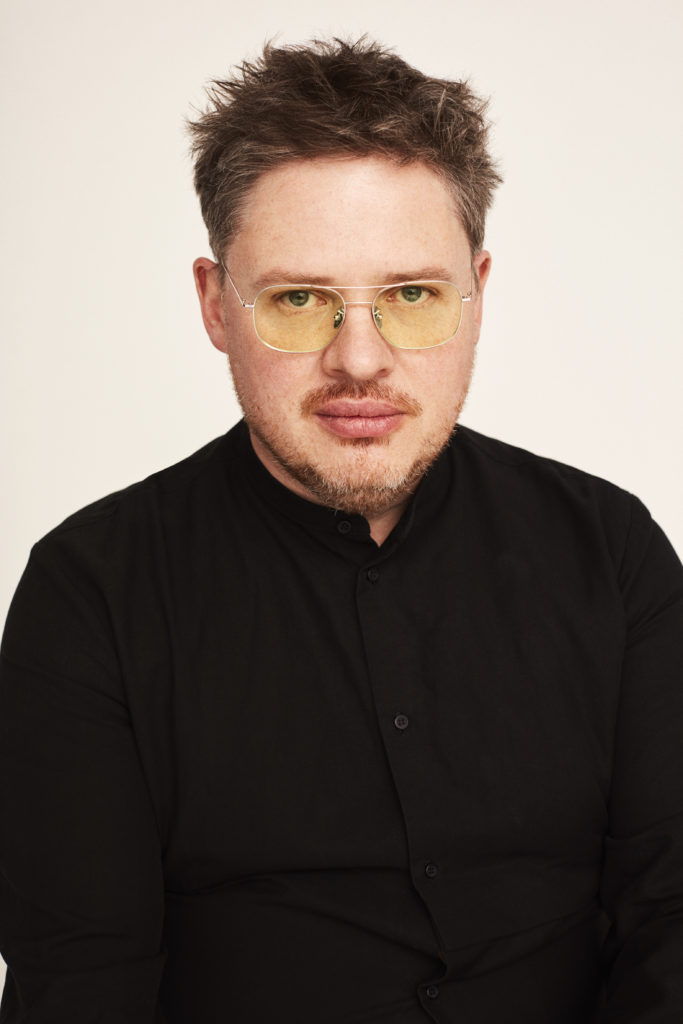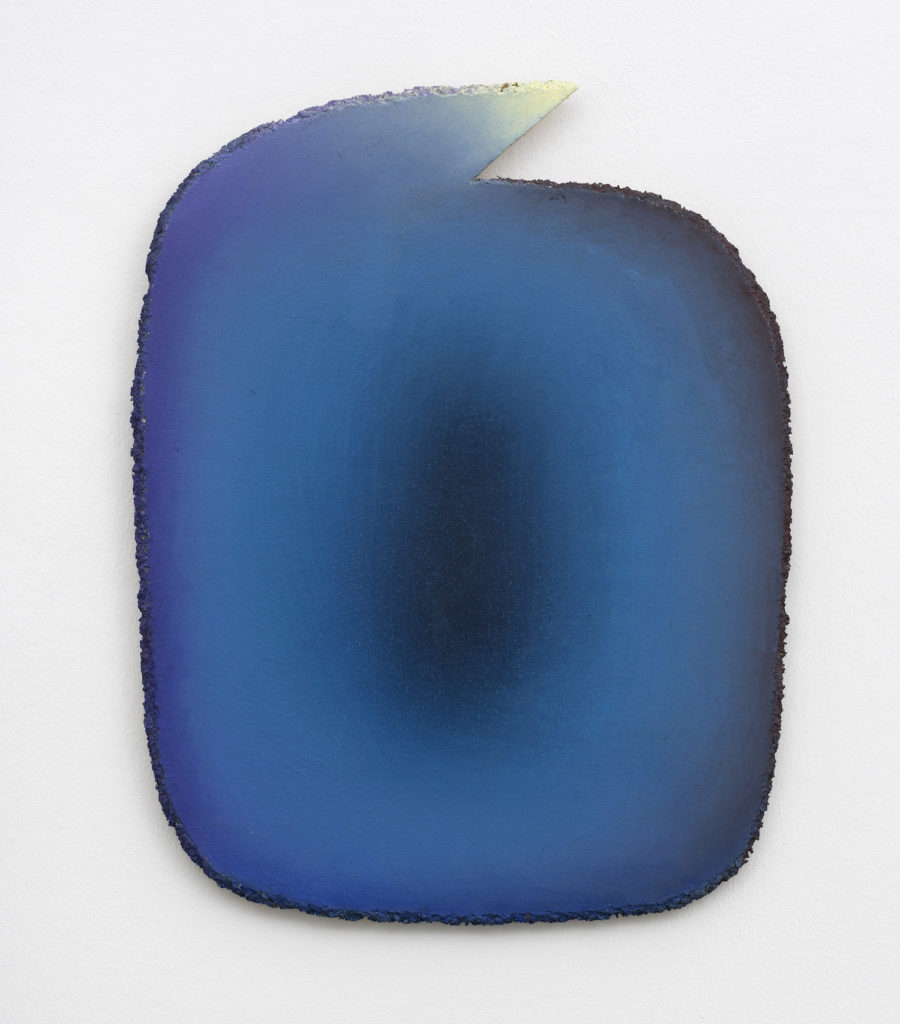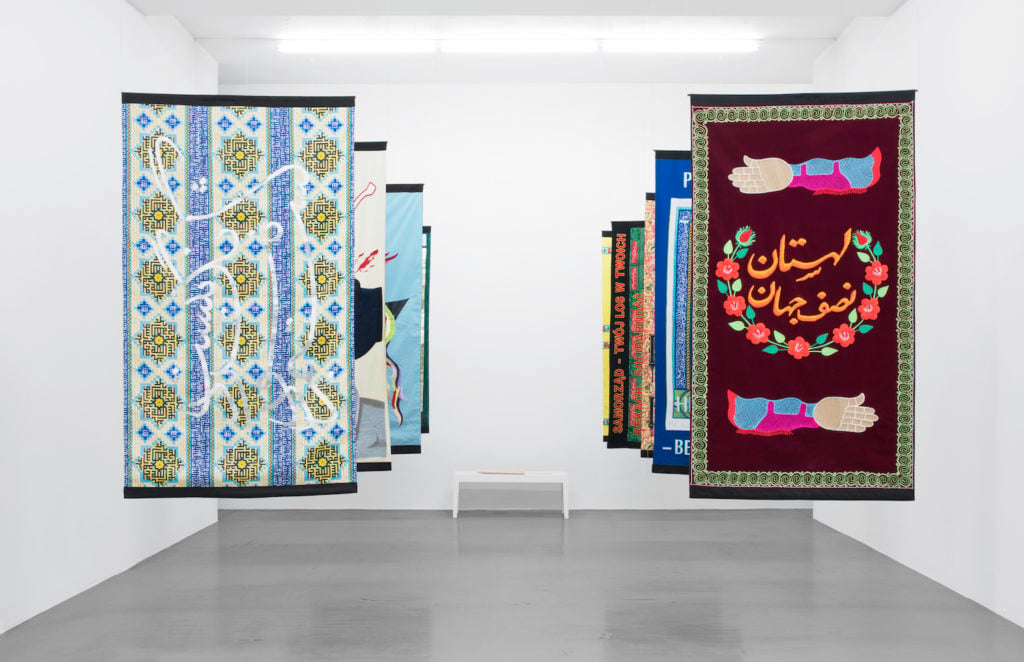People
‘You Don’t Have to Be Rich’: How One Young German Entrepreneur Is Busting the Myth of the ‘Typical’ Art Collector
Christian Kaspar Schwarm wants to create a new paradigm for art collectors.

Christian Kaspar Schwarm wants to create a new paradigm for art collectors.

Kate Brown

Christian Kaspar Schwarm does not look like your average art collector. But if you tell him that, expect a swift rebuttal, because Schwarm is adamant that no such person exists.
Last Thursday, the 46-year-old, Berlin-based entrepreneur and creative strategy consultant was a guest of honor at Art Cologne, where he received the fair’s annual collector award—a distinction he was dubious about when he was first contacted about the prize. In 2018, it went to the high-profile German collector and museum founder Julia Stoschek for her outstanding achievements in art education. Comparatively-speaking, Schwarm and his collection are less prominent, a fact he is well aware of.
But he also feels that it’s not only the big collectors that matter. “Every country has its small crew of very famous collectors,” said Schwarm, who is the cofounder of the online platform Independent Collectors, a growing community of around 7,000 collectors from over 100 countries. “We have this picture of a ‘typical’ collector in mind. But this pool is usually just about five or ten people per country. No gallery and no artist could survive with only these top collectors supporting their art.”
Schwarm, in fact, is evangelical about the democracy of art collecting. “You don’t have to be a millionaire to start a collection,” he said. “You don’t have to be rich.”
Although he is, on one level, a businessman, Schwarm doesn’t talk about art in financial terms. He regrets the “greed” of the art market and dislikes tactical buying. He wants to talk about the work, which can be difficult in a booming market. “Two years ago, when I was in Basel, I had the feeling that a very hot market had cooled down again, and that it became possible to discuss art again in a more substantial way,” he said.
And that goal—to have substantive discussions—is exactly why he co-founded Independent Collectors with friends in 2008.

David Horvitz, Mail Nothing to Tate Modern (2010). Installation view at the Weserburg Museum, Bremen. Photo: Björn Behrens
Starting the site was a rather naive decision, he admits. “I was just interested in talking to like-minded people,” he said. “Of course, I spoke with artists and gallerists, but it was hard to find collectors, especially ones my age.” But he wasn’t quite prepared for how much work building and maintaining the site would require.Now, he has a whole team behind it.
When it launched 11 years ago, the website was a private platform for collectors to meet and talk about art. Today, it is a place where their private passions can be shared with their peers and the public. Scroll through, and you’ll learn about collections both renowned and obscure, from unusual havens tucked away in major art hubs like London or Paris, to breathtaking open-air spaces on a luxurious farmlands in New Zealand.
There are celebrity collections, like the one of Los Angeles collector-tycoon Stefan Simchowitz, right next to lesser-known holdings, like those of Daisuke Miyatsu, who has a formidable collection in Ichikawa, Japan, that he built on an office worker’s salary.
To screen potential members, Schwarm’s team takes a close look at each applicant to establish his or her collecting credentials. But membership is free, there are no ads, and no commercial business takes place on the site. (A partnership with BMW has made the site financially sustainable.)
“What I really wanted to do was to correct the cliché,” he said of the site. For him, the image of a typically male, “competition-oriented,” “secretive loner” collector is completely antiquated, and he was visibly filled with pride when he said that around 40 percent of the members are female collectors.

Raimer Jochims, Dom II, 2013.
Schwarm’s other, related passion—his desire to find and buy the art he loves—was especially evident at Art Cologne, where fair-goers have a big decision to make upon entering the event grounds: up, or down? The choice is partly financial. The lower level hosts big-ticket Post-war and Modern art, while the upstairs floor is dedicated to all things contemporary—and it’s upstairs where Schwarm is headed.
That’s no surprise for a collector known for having only 21st-century art. Generally, his taste leans towards the political/conceptual spectrum: Michael E. Smith, David Horvitz, and Jonathan Monk are among some of the artists whom he has collected. (He doesn’t usually gush over paintings.)
But his interest in work by younger artists is not absolute. Schwarm said the last work he bought was by 83-year-old German conceptual painter Raimer Jochims, just a few weeks ago. On the recommendation of a collector friend, he visited Frankfurt’s Galerie Jacky Strenz to see Jochims’s show and left with a iridescent blue painting that looks a bit like a cat eye. It’s now his phone wallpaper and adorns a prominent wall in his West Berlin apartment. (It’s so disorienting and powerful, he said with a bemoaned chuckle, that everything in his home had to be rearranged).

Slavs and Tatars, Friendship of Nations: Polish Shi´ite Showbiz (2011). Installation view at the Weserburg Museum, Bremen. Photo: Björn Behrens
It’s Schwarm’s belief that art should be an emotional and intuitive buy. “It’s not unlike shopping for books or clothing—usually you know more or less what you are looking for and you can move rather quickly through the rest, until you stop at something really interesting,” he said.
At the fair, he stopped in front of a Slavs and Tatars installation at the Berlin gallery Kraupa-Tuskany Zeidler and walked me through the works on view, having already seen them in a PDF sent by the gallery ahead of the fair. Among the works were a bench sculpture and editions ranging from around €40,000 ($45,000) down to just €40 ($45).
“Slavs and Tatars really changed my life,” said Schwarm, who owns several pieces by the Eastern European collective. “They deal with the three big narratives of the 20th century: capitalism, communism, and Islam. I was born in Western Germany in 1972, and we always had a Western perspective on capitalism and communism, but I had absolutely no idea what happened between Communism and Islam. They triangulated that for me. It became a model for me, because if it can happen here, then it can happen in all other dimensions as well—we can easily miss one major side of the story.”